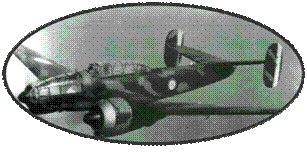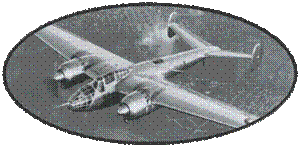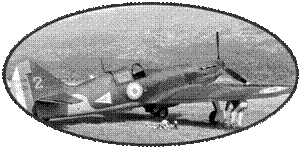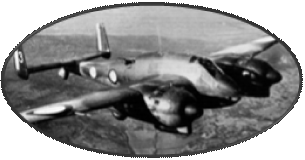In 1933, the brand new Air
France company needs to renew its aircraft fleet. The promising
Bloch MB220 and Dewoitine D338 are not yet available, so the company
is turning to transient aircrafts like the Wibault 283T.
It is in this context that
the Potez company offers Air France the Potez 620. This is derived
from its twin-engines Potez 540 that responds to the B.C.R program
(Bombardment / Combat / Reconnaissance). This twin-engine, appreciated
for its flight capabilities and maneuverability, however, has average
performance.
Potez 62 takes back the wing
of Potez 540. It's metallic structure is built around two central
rails in Duralumin, without shutters, any covered by a canvas covering
in linen. The engine nacelles and the retractable landing gear are
very close to those of the Potez 540. It is powered by two Gnome-Rhone
radial 14Kdrs / Kgrs of 14 cyl of 850 HP at the takeoff leading
to three-blade metal propellers with fixed pitch. The fuselage is
made of wood and is divided into several parts: the two-seater cockpit,
the toilet and the steward's post. Then comes a cabin for 6 passengers
and a second for 8 passengers. At the rear of the aircraft, there
is a luggage compartment. The aircraft is comfortable: it is indeed
equipped with heating and good soundproofing.
On September 12, 1934, Air
France ordered 6 aircraft to the company Potez, the first to be
delivered from December 1, 1934 and the last before June 1, 1935.
Following changes requested by Air France, it is only the 28 January
1935 that the Potez 662 made its first flight. The tests are going
well, and registered F-ANPG, it is delivered to the Air France Company
in April 1935, quickly joined by the 2nd aircraft registered F-ANPH
with a first commercial flight on the Line Le Bourget-Marseille
May 22, 1935 Meanwhile, Air France confirms an order for 12 aircraft.
Reliability issues are rapidly
emerging due to poor cooling and poor quality of the Gnome-Rhone
14K engines. Thus, on December 10, 1935, the F-ANPH caught in a
snowstorm, sees his left engine stop after a drop in oil pressure.
The plane crashes near Auxerre: even if we only deplore the wounded,
this event nailed to the ground all Potez 620 until January 1936.
The engines Gnome-Rhone 14K are replaced on the n ° 8 by Hispano-Suiza
12X engines, 12 cylinders in V 720 cv driving three-blade metal
propellers with variable pitch: thus motorized, it makes its first
flight on November 15, 1935. The following aircraft will be modified
in this way and will take the name Potez 621.
Thus motorized, from May
1936, the Potez 621 is put into service on the section Buenos Aires
- Santiago de Chile. Two planes (F-ANQN "Aguila", and
F-ANQQ "Falcon") will regularly ensure this connection
until the armistice of June 25, 1940. If the trace of "Falcon"
disappears at this time, "the Aguila ", stored first in
Buenos Aires will be sold in March 1942 to the new Uruguayan company
Pluna. It will provide services between Montevideo and Buenos Aires,
until 1946, before being stored, then destroyed in 1947.
From the declaration of war,
in September 1939, nine Potez 620/621 of Air France are requisitioned.
They will be assigned to Transport Aircraft Sections (SAT) 8/110
and 9/110, based at Le Bourget. During the winter of 1939/40, these
aircraft were integrated into a plan for troop transport to Holland
in the event of a German invasion by that country. Finally, the
plan is abandoned, and the Potez 620/21 resume their mission links.
After the German attack of May 10, 1940, they are used especially
for the transport of the personnel and the equipment of the Hunting
Groups, which must frequently change lands, pushed by the German
advance. However, these devices, outdated and lacking spare parts,
are frequently unavailable.
At the Armistice, the transport units are dissolved, and the Potez
620/621 are retransferred to Air France, although the flights are
not yet authorized.
Free France recovers damaged,
the Potez 621 F-ANQS, ex Air France on the ground of Damascus. Rehabilitated
and re-registered "OD-AAJ", it is made available to the
Governor of the Levant, Lebanon.
Air France will finally receive
8 Potez 620 and 15 Potez 621, including 6 in long-haul version.













